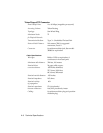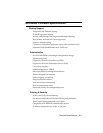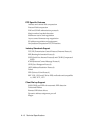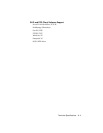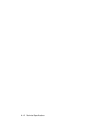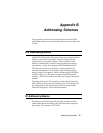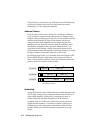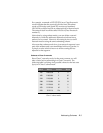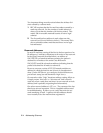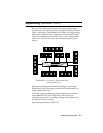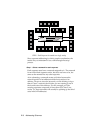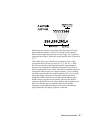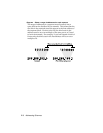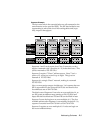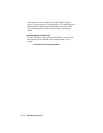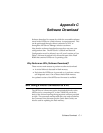B-4 Addressing Schemes
Two important things must be noticed about the address divi-
sions created by a subnet mask.
1. RFC 950 requires that the first and last subnet created by a
mask are reserved. So, the number of usable subnets is
always 2 less than the number of divisions created. This
makes 128 an unusable netmask because it has no legal
subnets!
2. The first and last host address in each subnet are also
reserved (see Reserved Addresses below). This means 254 is
also an unusable subnet mask because there are no legal
host addresses!
Reserved Addresses
In most IP machines, setting all the bits in the host portion of an
IP address to 1 indicates a broadcast to all nodes on the network.
In the Class B network described above, an address of
128.5.255.255 is a broadcast address meaning the packet is
destined for all nodes on the entire Class B network.
128.5.63.255 would be a broadcast address indicating that the
packet is destined for all nodes on subnet 63.
However, one rare version of TCP/IP instead considers an
address in which the host bits are all set to 0 a broadcast ad-
dress. On the NETServer, you configure for this difference as
part of basic setup (set net0 broadcast <high|low>).
On networks with a “high” broadcast address, setting all bits to
0 simply means “this host” or “this network” and is usually
used only when a node does not know its own network or node
address (and is probably requesting that information).
One other reserved address is 127.x.x.x. The contents of the last
three bytes are not important. This is a loopback address used
for troubleshooting. It allows you to verify that a device can
send something to itself. A packet with this address should
never actually leave the machine that originated it.



